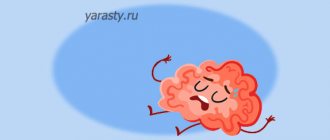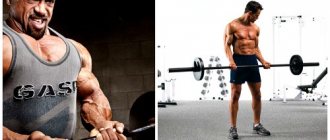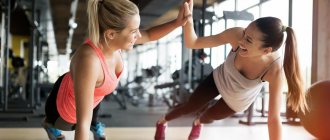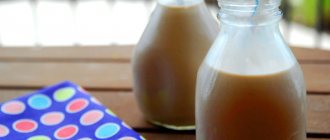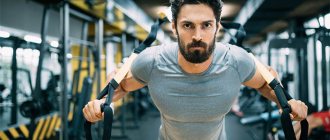Beer and sports
There is an undeniable connection between sports and... beer kegs. Research shows that it's not just athletes who drink, and the harder we work, the more we drink. Carbs and calories aside, there are reasons why athletes love to knock back a mug or two after a workout. Beer reduces muscle pain, replaces fluid lost during exercise, and even protects against kidney stones, but there are 8 more reasons why you deserve, nay, need, another glass.
Calories, calories, more calories
The key to success is to know how many calories are in different types of wine. The more calories a wine has, the more degrees it usually has. Most red and white wines range from 110 to 175 kcal per glass, but there are also sweet wines that contain more than 300 kcal. If you're at home, you can find all the calorie information here. If you're on vacation with friends, figuring out the calorie count will be a little more difficult. Since most of us have our own wine preferences, here's a picture that should help.
The number of calories is indicated per glass
For comparison, here are the calories in other adult beverages:
- 350 ml Aperol syringe - 100-120 kcal
- 350 ml of Wine Cooler cocktail - 215 kcal
- 330 ml beer - 135 kcal
- 75 ml shot of rum, vodka, etc.: approximately 140-170 kcal.
Sweet wines such as port not only have a very high alcohol content, but they also provide a lot of carbohydrate calories. That is why they are traditionally served in small quantities.
Beer doesn't dehydrate you
Drink in moderation.
Scientists haven't published any research yet on whether beer is an ideal recovery drink, but it will keep you hydrated after a workout. A 2015 study in the Journal of the International Sports Society sampled a group of 16 male athletes. Some drank mineral water after a hard workout, others drank beer and mineral water. There were no significant differences in their hydration levels. A 2015 study in the International Journal of Sports Nutrition and Metabolism found that light beer with added sodium helps hydrate after exercise. More on the topic: Alcohol and fitness
Other tips
- One of the easiest and most effective ways to reduce calories is to make an Aperol spritz cocktail. Take half a glass of wine, add ice. Fill with diet soda. An Aperol syringe in a cocktail contains no more than 100-120 kcal.
- Be a wine snob. Most studies say that people buy wine according to price. If you're buying expensive wine, you'll probably get by with two glasses, unless you're related to Donald Trump.
- Drink water between drinks. There are no calories in water and it will fill you up. It will also reduce discomfort the next day.
There are many ways to avoid gaining weight and still enjoy your favorite wines. This is not always the end of any diet. Wine is good for blood circulation and reduces stress. For this reason alone, you don’t need to be afraid of an extra glass. Cheers!
It protects against kidney stones
Over time, frequent dehydration can lead to the formation of kidney stones. But beer helps the kidneys stay clean. A 2013 study published in the Clinical Journal of the American Society of Clinical Nephrology found that sugar-containing drinks, such as soda or juice, increase the risk of stone formation. But regular consumption of beer reduces the risk by 41%, while wine reduces the risk by only 31-33%.
More on the topic: Protein beer
Alcohol and excess weight
Alcohol is a very high-calorie product: 1 g of 96% ethanol contains up to 7 kcal. Many alcoholic drinks contain additional components in the form of flavor enhancers, sugar and other harmful additives. When drinking one dose of strong alcohol, a person consumes many empty calories along with it.
How excess fat accumulation occurs when drinking alcohol:
- Appetite increases. Alcohol irritates the walls of the stomach, and the bitter taste of the drink increases appetite. Decreased control also leads to phantom hunger and eating large amounts of food.
- Fluid retention occurs in the body. Ethanol increases the process of tissue dehydration (increased fluid consumption in cells). When a person consumes alcohol, the production of antidiuretic hormone increases, which begins to actively accumulate fluid inside the body. This leads to moisture retention, swelling and excess weight gain.
- Metabolism is disrupted. Strong drinks contribute to the release of insulin into the blood, resulting in the accumulation of excess subcutaneous fat. Fatty tissue also accumulates on internal organs, which reduces their performance. All these processes lead to metabolic disorders and digestive disorders.
Beer builds strong bones
A 2007 study published in Nutritional Health and Aging found that silicon in the diet is a critical component for bone and skeletal tissue. Guess where the most silicon is? In beer. The amount of silicon in a pint of beer varies from beer to beer, although IPA (India Pale Ale) beer is best due to its light malt and rich hop content, the main source of silicon. However, a study published in the journal Food and Science in Agriculture found that three bottles of any beer will cover your daily requirement.
Other negative consequences
The bad news didn't end there. Alcohol thins the blood, which in case of bruises and other injuries potentially leads to internal bleeding. Alcoholic drinks negatively affect brain cells, the functions of the cardiovascular system and prevent you from sleeping soundly. Well, good sleep is crucial in restoring the body, especially when it comes to ultra-intense exercise.
If none of the above arguments convince you to avoid going to the bar when you get home from the gym, you might want to consider cutting back on your drinks. We also recommend that you maintain the required time between finishing the lesson and receiving the “reward.”
Chinese Chen Haigang has not been sick for 30 years: he repeats the movements of a monkey
The couple converted an old garden shed in the courtyard into a stylish pub in 3 days: photo
The Arctic is on fire: Siberian heat worries scientists
It strengthens connections
A study published in Psychological Science found that moderate doses of alcohol strengthen bonds in social groups. The number of people smiling in company also increases. Our social connections are very important - especially when it comes to sports. A few sports friends will save you from idleness on a cold morning and make you finish the necessary repetitions in the gym.
Athletes and alcohol
Alcohol destroys the body's aerobic capacity and reduces the athlete's endurance. However, many athletes ignore this fact, which negatively affects their reputation:
- Mikhail Koklyaev, Russian strength sports athlete. He was noticed drinking alcohol, and later realized the pseudo-benefits of such drinks. Moreover, Mikhail was a participant in an accident where a pedestrian died. We don’t know whether he was drunk then, but Koklyaev refused a medical examination. His interview:
- Tyson Fury, the undefeated British heavyweight boxer, defeated V. Klitschko. He stopped his career, in part, because of alcohol and drugs. Gradually he is stripped of all his titles.
One of T. Fury’s quotes: “I drink, I’m on the verge of alcoholism - I drink from Monday to Sunday. I can't handle it, and when I drink myself into oblivion, it gets easier. I'm not lying, there's no need for that. I use drugs, cocaine, but I don’t dope.”
Former world champions Tyson Fury and Ricky Hatton
Interesting: Today, alcohol consumption is controlled by anti-doping agencies and is prohibited in some sports.
Your heart loves to drink
The key to victory is moderation. Drinking too much alcohol puts you at risk for heart disease, but according to the American Heart Association, one drink a day raises your good cholesterol levels and reduces your risk of blood clots. The association recommends 1-2 drinks per day for men and one for women.
More on the topic: Pizza, beer and other diet products
Know your limits
For safety reasons, we do not recommend that you drink too much alcohol. We often hear the phrase: “Everything in moderation.” The same applies to wine. Since the calorie content of wine varies from 60 to 300 kcal per 100 ml, you need to balance your calorie budget with a trip to a wine bar.
Sometimes restaurants serve 200 and 300 ml glasses of wine. And just when you think you've only had one drink, you may have had two. Follow the basic rule: every 30 ml is ±25 kcal. Next time you go to a restaurant, count how many grams you drink and calculate the number of calories you get. If you are unsure about the volume of wine, ask the waiter or bartender how much wine is served as one serving. They should know.
How does alcohol affect muscles?
At the beginning of the article, we looked in general terms at how alcohol affects training and why it reduces athletic performance. Now we’ll tell you in more detail how alcohol affects muscles.
We have already mentioned the energy required to neutralize alcohol by the liver. This energy in the human body is represented by molecules of ATP-adenosine triphosphate - a universal compound, upon the breakdown of which this same energy is released. So, in order for your muscles to contract, you need the same ATP. Accordingly, the functional characteristics of muscles when drinking alcohol decrease simply because there is not enough “fuel”. Muscle growth is similarly affected when drinking ethanol - protein synthesis is a very energy-intensive process that requires a lot of energy. But not only that! Let us list the four main conditions for muscle growth (according to Professor V.N. Seluyanov):
- pool of free amino acids in the cell;
- the presence of hydrogen ions in muscle fiber;
- the presence of anabolic hormones in the blood;
- the presence of free creatine in muscle fiber.
Presence of free creatine
Let's start with the last item on our list - free creatine. Creatine is a high-energy compound synthesized in the liver from 3 amino acids: arginine, glycine and methionine. The result is a funny paradox: when drinking alcohol, the body does not have enough energy to synthesize the energy-intensive substance necessary to build muscles. Moreover, the listed amino acids are non-essential, which means they can be synthesized independently. But the problem is that they are all synthesized in the same liver, and it, again, is busy neutralizing ethanol, and all its resources are spent on this.
Anabolic hormones
As for the presence of hormones in the blood, in order to begin to act, they must enter the cell. And here, as an obstacle to them, a product of alcohol metabolism appears - acetaldehyde (exactly how it is obtained will be discussed below). This compound can freely pass into the cells of the body, disrupting the permeability of cell membranes. In other words, if acetaldehyde gets into the cell, it will be difficult for anything else to get there, including anabolic hormones. This means that even if you introduce anabolic agents from the outside, you will not get a 100% positive result from them. That is, in the case of simultaneous use of anabolic hormones and alcohol, most of the hormones will leave your body unchanged. In a word, both money and efforts will be thrown down the drain.
Hydrogen ions in muscle fiber
There should be a lot of hydrogen ions in the muscle fiber, but at the same time, they should be present there for a very limited time. We'll explain why now.
Hydrogen ions improve the permeability of the cell membrane, that is, they contribute to better penetration of anabolic agents (amino acids and hormones) into the cell. They also facilitate access of hormones to the hereditary information of the cell, thereby triggering protein synthesis in the muscles. Moreover, this happens due to the so-called “limited destruction” of the cell. And here we can see the negative side of strong acidification of the cell (that is, the accumulation of a large number of hydrogen ions) - these same destructions can be excessive. For this reason, hydrogen ions must be removed from the cell as soon as possible.
For this purpose, there is a lactate ion - when connected with hydrogen, it turns into lactic acid, since the cell membrane is permeable to this compound. In short, hydrogen ions can leave the muscle cell in the form of lactic acid. But what happens if you drink alcohol before your workout? The answer to this question is simple. It becomes more difficult to remove hydrogen ions, which is why they remain in the muscle fiber longer, causing much more “destruction” than expected. That is, your training causes a negative effect, during its course you damage the structures of your body, preventing them from recovering. Accordingly, you work at a disadvantage.
Pool of free amino acids
Regarding the pool of free amino acids, you need to consider the following. After drinking alcohol, due to the reasons listed above, you will not have very many amino acids in your cell. One part of them will be deaminated, that is, converted into sources of energy and NH2 groups in order to neutralize alcohol. And the second part simply will not get to the cell due to its poor permeability.
So, let’s summarize how post-workout alcohol affects muscles. Since the processes of energy supply to the cell are affected, and the utilization of acidic products of muscle contraction is impaired, the synthesis of anabolic hormones, as well as their access to the cell, is difficult, the performance of your workouts will suffer, to put it mildly.
What effect does non-alcoholic beer have?
Some believe that since such a drink does not contain ethyl alcohol, its use can be compared to drinking lemonade or kvass. But keep in mind that all substances harmful to the body are retained in the drink, including alcohol. Although its quantity is much less – up to 0.5%. And the impact on many human systems will remain just as negative.
An important point is the calorie content of non-alcoholic beer. It sometimes even exceeds that of regular foam, says hudeem-bez-problem.ru. Therefore, it doesn’t matter how long after training you drink it, or even the day before classes, the huge calorie content will not go away.
What to replace beer with?
Considering the negative impact of a foamy drink, choose other ways to quench your thirst after exercise. You should not choose kvass and cola, since although they cause less harm, they are no more beneficial. They will contribute to increased insulin production, which will negatively affect the athlete’s body.
The best choice for the practitioner is simple drinking water without gas. It normalizes metabolic processes, speeds up metabolism and improves your condition.
The author is Yulia Mosalova, for more information about the experts, see the authors of the site
- 44
Does alcohol affect testosterone?
As briefly mentioned above, alcohol affects testosterone levels, reducing it for a number of the reasons mentioned above. However, I would like to focus on a drink that, for some reason, is not classified as “serious” alcohol. We're talking, of course, about beer.
This drink is brewed from malt and hops. Hops are an excellent source of phytoestrogens - substances of plant origin, the structure of which is very similar to female sex hormones. With a systematic increase in the concentration of such sex hormones in a man’s body, his hormonal profile changes not for the better for him. Female-type fat deposits appear, and visceral fat (around the internal organs) is actively deposited. In this case, behavior becomes sluggish, aggression and the desire to be first gives way to laziness and complacency. Remember the medieval monks - classic beer drinkers with round bellies. As for them, there is another important point - for the monks the issue of decreased libido was very relevant. Beer successfully solved this issue, because beer was brewed primarily in monasteries.
Wine after workout
Optimal odds in Live and Lines for matches and sporting events, and all this is available in the application, and smart you can click on the link for free and pick up a bonus using the MyAndroid promotional code.
Those who like to drink wine after training need to remember: the main growth of muscle mass occurs precisely while the body is resting. The muscle tissues are saturated with useful substances, microcracks are healed, while metabolism accelerates and the body mobilizes all its strength for recovery. If you add alcohol during this period, this empty protein will not be processed in any way and muscle mass simply will not grow.
How much wine do you need to drink to get drunk?
Important! Immediately after exercise, the rate of absorption of nutrients increases, for example: the workout lasted an hour, which means that after another two hours the rate of absorption of nutrients will be two to three times higher than at normal times. Therefore, drunk wine immediately enters the bloodstream and is transported to the muscles, resulting in regression instead of progress. The only option that will not harm is for the athlete to drink 100 ml of alcohol (preferably white wine) a day after training, provided there is no training during the next day. Drinking drinks the night before or on the day of training will result in zero muscle gain. That is, if you drink wine today, don’t go to train tomorrow.
Alcohol slows recovery
When you train hard, actin and myosin fibers come into play, which are responsible for muscle contraction. If everything is done correctly, the muscles after push-ups become stronger and have time to recover. But if you drink a margarita after a workout, your body won't get any of the benefits from repeated repetitions. Here's another fact that speaks against drinking alcohol after the gym. Scientific studies have shown that alcohol reduces levels of human growth hormone, which helps the body build muscle mass.
Beer in the evening on training day
Any person's leisure time includes holidays. After training in the evening, are you planning an alcoholic feast, a party, watching a football match, drinking beer? It's hard to refuse. Remember the only rule is to drink in moderation. The poisonous dose of ethyl alcohol is 40 grams, which is equal to 600 milliliters of beer. After drinking a lot of alcohol in the evening, reschedule your upcoming workout for another day. The body removes toxins and spends energy processing alcohol. When you start training, you risk causing significant harm to your health. The alcohol will finally leave the blood, the cardiovascular and muscular systems will normalize after 5-7 days.
Reduced cravings for alcohol when playing sports
The tendency to reduce cravings for alcohol with regular exercise has long been established. In first place is slow running at intervals of one day. During long runs, pleasure elements are produced (anandamide, beta-endorphin, phenethylamine), which reduce dependence on alcoholic beverages.
Humans have evolved to enjoy jogging. When our ancestors lived in Africa, they required long runs to hunt and gather food over large areas. This behavior is reinforced by a positive mental reaction, the person feels a surge of strength and improved mood. To achieve the best effect, it is advisable to intensify your running a little, but without straining too much.
Now let’s determine whether sports and alcohol are compatible. In fact, regular exercise makes alcoholism treatment easier. Sport reduces the craving for alcohol, has an encouraging and healing effect, and brings pleasure in life.
In Germany, specialists include various outdoor physical activities in standard methods of treating alcoholism. Previously, the founders of such clinics were church brotherhoods, which successfully used the cultivation of cultivated plants in fields and gardens in the rehabilitation process. Treatment of alcoholics is carried out by social workers, psychiatrists-narcologists, and also instructors in therapeutic exercises. The duration of the standard course in the clinic is 2-3 months, until the addicted person learns to live a full life without drinking alcohol.
Ideal abstinence time
Ideally, one hour between training and drinking is the absolute minimum. If you can, experts recommend waiting at least six hours. For individuals who practice serious strength training, the period of abstinence is doubled. So if you're heading to the gym in the afternoon, your evening should be alcohol-free.
A space tower will be built in Moscow: the height of the building will be 248 meters
Coronavirus again postpones the meeting with the audience: “Tenet” has been postponed to August
Not original, but romantic: the most popular places for marriage proposals
Emphasis on moderate consumption of alcoholic beverages
It is worth noting that the amount of alcohol consumed significantly affects the decrease in the effectiveness of training. Two scientific studies looked at the rate of protein synthesis in people who drank different amounts of alcohol. The results of both experiments were published in the Journal of Clinical Investigation.
In one case, the rate of protein synthesis was found to be suppressed by 24 percent after consuming just 71 grams of pure alcohol (equivalent to five bottles of beer). The second study revealed the size of the maximum portion of alcohol that does not affect this important process. It turns out that if you drink no more than 28 grams of alcohol (the equivalent of two bottles of beer), your muscles can avoid the negative effects of drinking on protein synthesis. As you can see, moderation will be your best solution.
When is it legal to drink beer?
The undesirability of drinking beer immediately after working out in the gym does not mean that people are forced to completely abandon this drink
It is only important to follow some rules that will allow you to maintain not only a beautiful figure, but also human health.
- It is possible to combine both sports and drinking quality beer if you maintain the right interval. After an active workout, drinking alcohol is allowed no earlier than two to three days later.
- You should take a responsible approach to choosing the drink itself. It is better if the beer contains a minimum amount of flavorings, preservatives and other minor ingredients. It is best to purchase fresh draft drinks without flavoring additives.
- If you drank a lot of alcohol during a feast or outdoor recreation, you should reschedule your planned workout. The human body suffers due to the increased ethanol content in it, so exercise in the gym will not be effective or even cause harm. The optimal interval for rest is 5–7 days.
- The time required for the body to recover directly depends on the type of physical activity chosen. If a person prefers light fitness, then you can attend a training session the day after the holiday with a feast. If classes involve lifting heavy weights, then it is better to wait about a week.
It is better not to drink beer after an active workout, but if this cannot be avoided, you need to make sure you have snacks in advance. The best option would be protein foods - meat or fish. We should not forget about the recommended amount.
As a rule, if a person limits himself to one mug, then there is no fear of significant harm to health and figure, but drinking beer in excess is undesirable under any circumstances.
Exercises for hangover syndrome
It has long been known that sports are compatible with hangovers. It helps accelerate the elimination of harmful components from the body, improve kidney function, and eliminate headaches and swelling. However, the technique can only be used by physically healthy and young people due to the heavy stress on the heart.
It is advisable to start exercises after a bowel movement and a single feast. One of the exercise options is sex, which stimulates metabolism, the release of endorphins, improving well-being and eliminating headaches.
If you drink alcohol and play sports, the smell of fumes disappears faster, which is the removal of under-oxidized products of alcohol processing through the lungs. By speeding up your metabolism, physical activity dispels the myth by helping the body get rid of toxins faster.
With regular exercise (prolonged and repeated for several days), you can get rid of large-scale hand tremors (with high-amplitude hand tremors). This occurs when there is a lack of dopamine (the pleasure hormone), which is produced naturally during exercise, allowing you to avoid antidepressants.
An active lifestyle and abstinence from alcohol, including beer, until the body’s condition normalizes will help get rid of stubborn swelling. You can take care of your morning condition in the evening. After the festive event, if you still have some strength left, you can do gymnastics for 40 minutes. This will speed up your metabolism and ease hangover symptoms.

